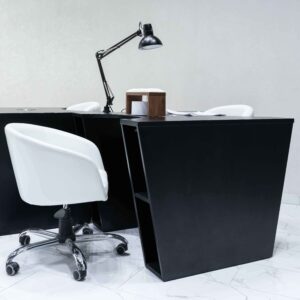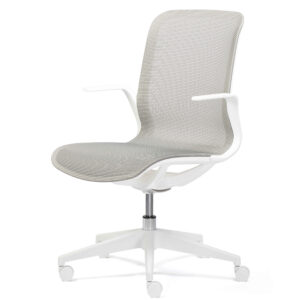Minimal furniture has become one of the most sought-after styles for furnishing home, office or community areas.
And if you too have landed on this article, it means that you are starting to thinking about creating a minimal furniture for your workspace or home environment.
We would therefore be glad to provide you with the main information to understand what lies behind the minimalist trend, which, as it may not seem, is not limited to simple design choices, but becomes a real lifestyle.
Let’s start: first of all we’ll introduce you to the key concept of minimal furniture, the policy of ”Less is more”.
Less is more
The concept of ”Less is more” has been introduced into the architectural world, for the first time, by well-known designer Ludwig Van der Rohe. He was the first to view with aversion those compositions that made pomp and irreproachable compositional their only strong point.
He therefore began to focus on removing the superfluous, managing to stand out with compositions that were anything but complex, but with enormous visual impact. From this the ”Less is more” ideal was born, and, over time, it has been perfected to become the key concept of minimal furniture.
But this concept also finds other fields of application. There are those who have made a real lifestyle out of this philosophy. For many people, ”Less is more” has become, to date, a real hymn against consumerism.
The Characteristic of minimal furniture
Let’s now go and see what the distinctive features and peculiarities of minimal furniture are. In minimalist design, sober and essential lines will be sought; this will also influence the choice of compositional elements of our furniture.
The first step to furnish your space, following the minimalist current, is to extrapolate its essentiality and full concept. According to this logic, lines and shapes must have the aim of giving a simple answer to a complex need.

This does not mean that it will be necessary to empty your home or office, but rather try to remove all those furnishing elements that do not reflect the concept of essentiality. The ideal colors obviously must be not override the feeling of simplicity that characterizes this current, but rather enhance its peculiarities of lightness and simplicity.
Neutral colors will be chosen, the furnishing elements will tend to be monochromatic and will range from the most glossy to the most opaque finishes. Sometimes, small decorations can be used with a color that offers a clear visual detachment and which gives more dynamism.
Minimal office
In conclusion, as we are specialized in furnishing offices, laboratories, waiting rooms, communities and contracts, we feel compelled to share our experience in the field with you. Over the years we have noticed how furnishing an office in a minimal way can affect the worker’s productivity and concentration.
In fact, we see that the removal of junk and possible and useless distractions guarantees greater concentration and, diametrically, increases productivity. We have noticed that many chairs among our productions are full of “artifices” and details that would be out of place in a minimal environment. For this reason we have created the ergonomic task chair mod. Jolie, a seat endowed with great beauty combined with extreme simplicity and lightness.
If you are looking for the ultimate compositional element for your furniture and if this element were just a chair, an armchair or a swivel stool, we would be happy to welcome you to our web site in hopes of finding the best solution for you and helping you to complete your furniture.

